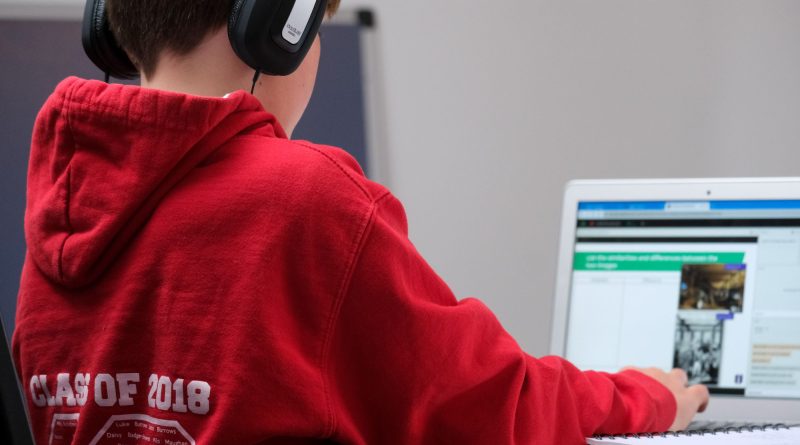Technology In Education: An Overview
The use of technology in education is constantly evolving. With new technology being developed every day, the possibilities for technology in education are endless. Technology has already transformed the way people learn, and it is continuing to do so at an ever-increasing rate. One of the biggest changes that technology has brought to education is the ability to learn online. Online learning platforms such as Coursera and edX offer courses from top universities around the world that can be taken by anyone with an internet connection. This has made education more accessible than ever before.
In addition to making education more accessible, technology has also made it more engaging. With interactive learning platforms and multimedia resources, learners are able to engage with material in new and exciting ways. This can make learning more enjoyable and effective. Also, technology education has been involved to schools for a long time. It helps schools to manage student, teacher and parent communication more efficiently. Besides the advantages mentioned above, technology has a lot of benefits for child development as well.
The role of educational technology in modern classrooms and online learning
Technology has become an integral part of the modern classroom. With so many different uses, it is hard to imagine a classroom without technology. One of the most important roles of technology in the classroom is to provide students with access to information. In the past, students would have to go to the library and find information in books. Now, they can simply use the internet and digital devices to find what they need and giving students the opportunity to learn at their own pace.
Technology can also be used to create engaging and interactive learning experiences, improving student engagement. For example, many educational websites and apps now offer games and quizzes that make learning more fun. These can be great tools to support students understand difficult concepts.
Technology also plays a role in communication between schools, parents, and students. For example, many schools now use online portals to keep parents up-to-date on their child’s progress. Additionally, technology can be used to send reminders and alerts to parents and students.
How are digital materials used in physical classroom?
Education technology has become commonplace in most classrooms. According to the National Center for Education Statistics, as of 2016, 78 percent of public schools were using digital technology in the classroom. This number is only expected to grow in the coming years.
One of the most popular uses of technology in the classroom is for reading instruction. A study by the Joan Ganz Cooney Center found that more than two-thirds of elementary schools were using technology for reading instruction. This is likely because technology can be an effective tool for teaching literacy skills.
Technology can also be used to help and prepare students with disabilities. For example, students who are blind or have low vision can use technology for specific programs to access information in a variety of ways. For example, they can use screen readers to read electronic text aloud, or they can use voice recognition software to control the computer with their voice.
Technology is also being used more and more in science classrooms. For example, many student learning environments are using technology to create virtual labs. These labs are allowing students to conduct experiments without having to leave the classroom.
Why technology is important for child development
Technology can be a great tool for child development. For example, it can help children develop problem-solving skills. One way technology does this is by providing children with opportunities to explore and experiment. For example, many educational apps and websites now offer games, activities and appropriate technological processes that encourage children to try new things and solve problems. In addition, technology can help children develop social skills. For example, online communities can provide children with a safe place to make friends and learn about new cultures.
Collaborative learning in technology can also help children develop communication skills. This is because technology provides children with opportunities to express themselves in a variety of ways. For example, they can use technology to create videos, songs, or pictures. Technology can also help children develop fine motor skills. For example, many touchscreen devices now offer apps that help children practice using a stylus or their fingers to draw and write.
In conclusion, technology plays a vital role in education and child development. It provides children with access to information, creates engaging and interactive learning experiences, and helps children develop a variety of important skills.
What is Instructional Technology?
Instructional technology is the study and design of technology-based learning environments. It encompasses the theory, development, implementation, and assessment of technology-supported learning experiences.
How Does Instructional Technology Support Learning?
instructional technology supports learning in a variety of ways.
- It can help students access information. For example, students can use technology to research a topic or find information about a particular subject.
- It can help students learn in an engaging and interactive way. For example, many educational apps and websites now offer games and activities that encourage children to try different learning styles.
- It can help students develop important skills.
What are open educational resources?
Open educational resources (OER) are teaching and learning materials that are freely available online for anyone to use. OER can include textbooks, videos, lesson plans, games, and more.
How Can OER Be Used in the Classroom?
OER can be used in a variety of ways in the classroom. For example, classroom teachers can use OER to create customized lesson plans. In addition, OER can be used as supplementary materials to support existing curriculum.
Why Are OER Important?
OER are important because they provide educators with high-quality, affordable resources. In addition, OER can be easily customized to meet the needs of individual students and classrooms.
Technology education – What is technology-based learning?
Technology-based learning (TBL) is a type of instruction that uses technology to support and enhance the learning process. TBL can take many different forms, including online learning, virtual labs, and simulations.
How Does Technology-Based Learning Support Learning?
TBL supports learning in a variety of ways. For example, TBL can provide students with access to information. In addition, TBL can create engaging and interactive learning experiences. Finally, TBL can help students develop important skills.
What is distance learning?
Distance learning is a type of education that allows students to learn from a distance. This can include courses that are offered online, courses that are offered through the mail, and courses that are offered over the television.
How Does it Work?
Distance learning works by using technology to connect students with educators. This can be done in a variety of ways, including online learning, video conferencing, and the use of virtual classrooms.
Why Is it Growing in Popularity?
Distance learning is growing in popularity because it offers a number of benefits. These benefits include flexibility, affordability, and convenience. In addition, distance learning can help students achieve their educational goals.
How Does it Support Learning?
Distance learning supports learning in a variety of ways. In addition, distance learning can create opportunities for collaboration and interaction.



